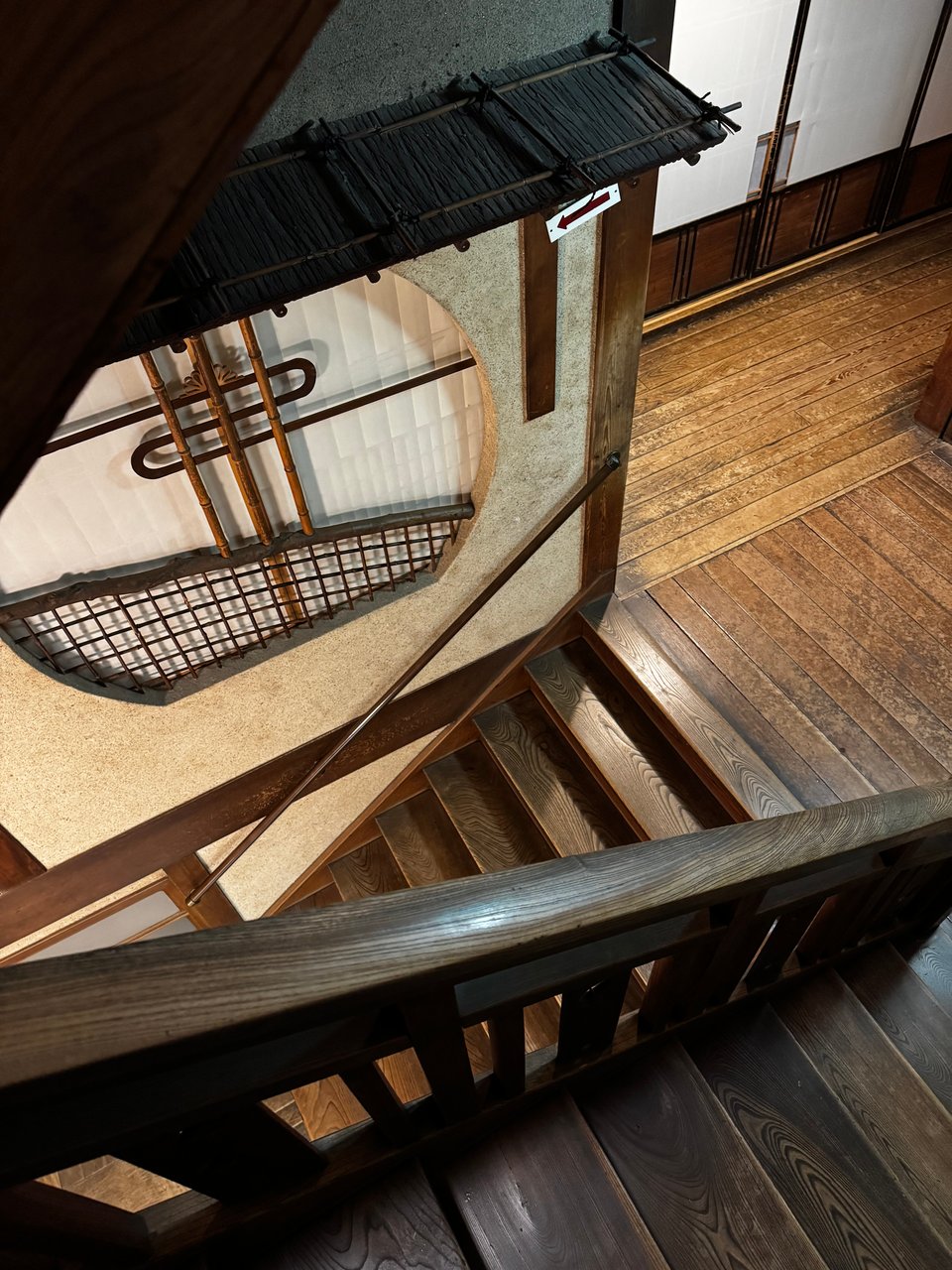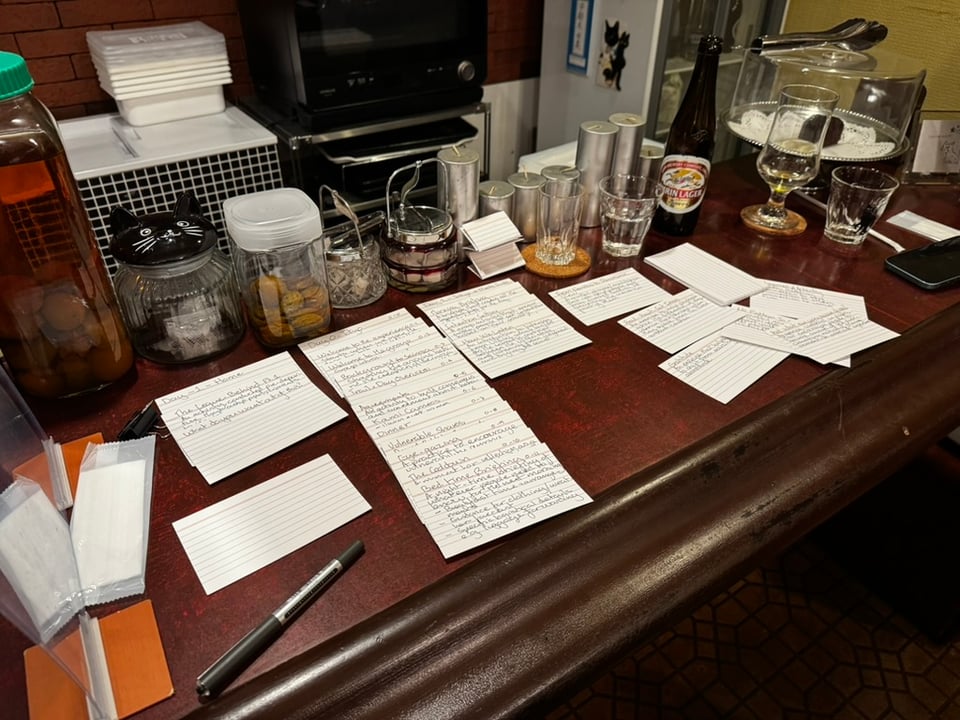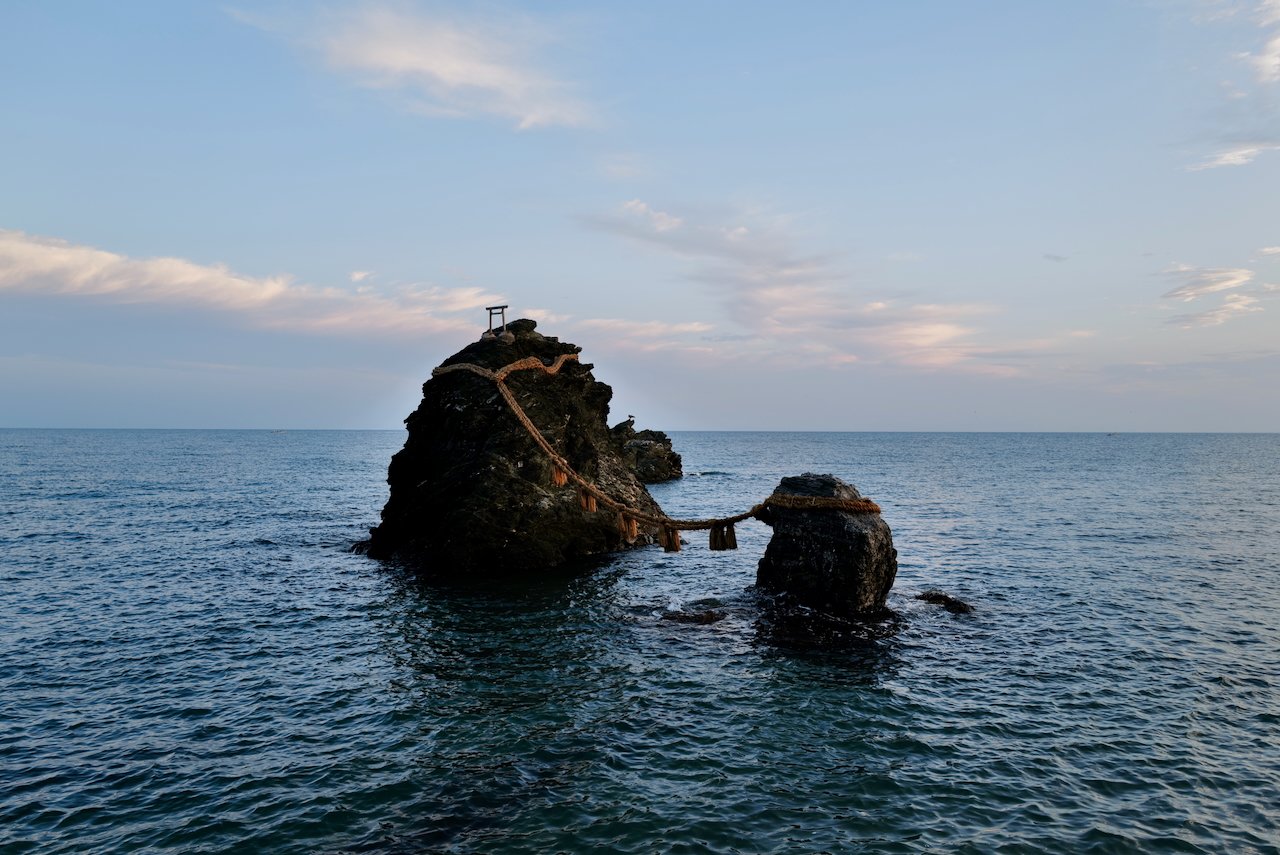Seinoza Walks Ed. 1 - Leaving space for magic
Welcome, friend, to the first edition of Seinoza Walks! It’s Drew here :)
A little while back Kalia and I decided that we wanted to build Seinoza in public, sharing insight into how we’re building our business, as we build it. That’s what this email, and the series to come, is all about.
At this stage, we’re both what might be considered thoroughly “mid-career”; we’ve experienced the highs and lows of working in everything from Silicon Valley research labs and startups to global industrial titans and management consulting firms.
Over the years, we’ve also watched with appreciation as others have built businesses grounded by a deep sense of connection, community, and creativity. Through our own personal growth and development, we felt the call to create something of our own in this way.
So what follows will, for the time being, be less about the ins and outs of our current walk in Japan (for that, head to Instagram and follow us there), and more about the principles, process, and heart that sits behind what we’re doing.
We hope you enjoy the journey.

Why on earth, you might ask, would we decide to build a business like Seinoza? Why would we bother to offer guided and facilitated pilgrimages in this quiet corner of Japan?
I mean, it’s not as if there aren’t already alternatives.
On the one hand, there’s plenty of information available on the internet about walking the Ise-ji. Craig Mod, long an inspiration of mine, has written a beautifully detailed guide that informed our first walk here last year. With his help alone, one could very easily piece together their own path to follow.
On the other, there are travel agencies out there that will help you extract maximum Ise vibes for minimum effort, bussing you through the boring shit, so that you can focus on the dopamine rush and, presumably, the likes.
We offer something different, and it’s grounded in the exquisite tension between effort and outcome and the way we choose to navigate it.
Firstly, we recognise that the difference between hearing a call to walk something like the Ise-ji and answering it can be activation energy. This walk passes through some pretty remote corners of Japan and organising accommodation, planning transportation, and keeping oneself fed and watered is a non-trivial undertaking, one that might dissuade you from ever taking your first step.
We take care of all of this. From transfers between Tokyo and trailhead, to stays in family-run cabins, ryokans, and homes (all with great meals), to navigating backroads and mountain passes, we offer people a safe pair of hands.
But we won’t put you on a minibus, let you skip the shit bits, or remove any of the other points of effort or friction that we know are key to the transformational potential of pilgrimage. We save that all for you. In a world increasingly defined by the ease of generative AI, and a future that promises to shave off all the rough edges while offering endless, effortless, and heartless output, we reckon that’s the stuff that really matters.

Secondly, while pilgrimage can be a solo exercise (and it’s an approach that comes highly recommended), walking in deep connection with others can offer a whole new level of experience. Kalia and I treat creating the conditions for this connection to emerge with a deep reverence.
We know that connection is rooted in vulnerability — the thing that’s really scary to say — and its non-judgmental, loving reception. From the point at which people apply to walk with us, to the way we follow-up in the weeks and months after a walk has concluded, what we facilitate and how we facilitate is focussed on building the environment of safety that makes these deeper connections possible. We actively equip people to have a different, and much deeper kind of conversation, and it’s through this dialogue that so much transformation can occur.
And, of course, we still honour solitude on these walks. It gives people the opportunity to turn something over in their head, or feel into what their gut or heart really wants. We offer our support there too, supporting people as they sink into an awareness of the present moment, what their system is asking for, and how the universe might be calling them forward.
Finally, we know that trying to manage these experiences too tightly can simply snuff them out. One of our founding principles is leave space for magic — we want to allow for the spontaneous and serendipitous and, above all, for each walker’s inherent wisdom to emerge along the way. It’s a difficult line to walk, but what we aim to offer is in line with a once-famous Australian breakfast cereal: not too heavy, not too light, it’s (Kellogg’s) just right.

Over the past 72 hours in Japan, that principle — leave space for magic — has been put to the test. We’ve walked through our facilitation guides and given people more space to breathe. We pored over day plans and made the decision to cut five kilometres. And this iteration that naturally wants to occur when strategy meets reality will repeat over the rest of our time here, and in the months leading up to our April ’26 walk. It’s not effortless, nor is it frictionless, but it’s certainly the best way we know to build something beautiful.
If you’d like to join us on a walk of your own, applications for our April 2026 pilgrimage are now open.
